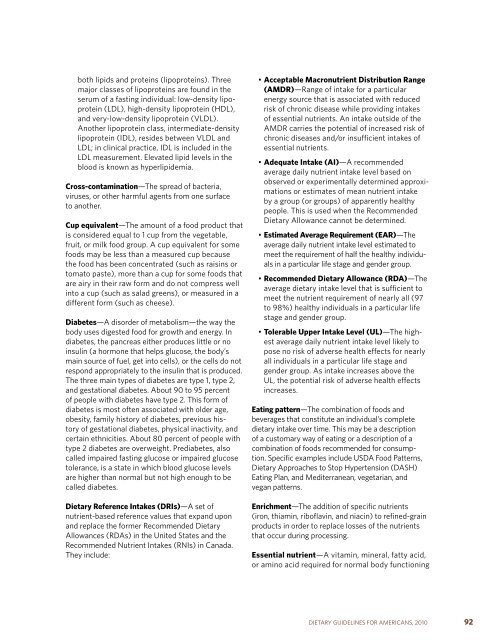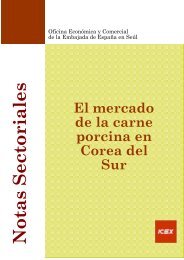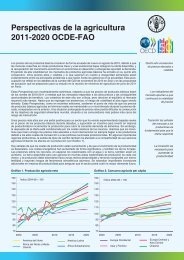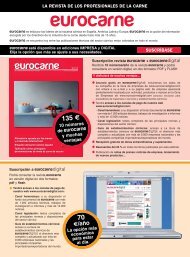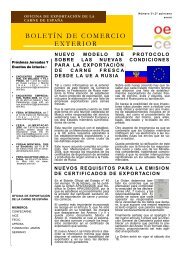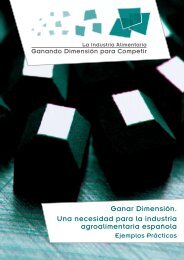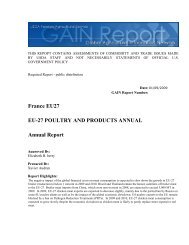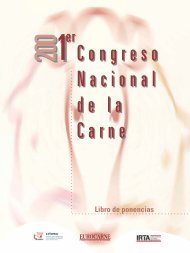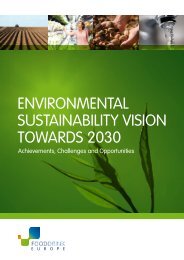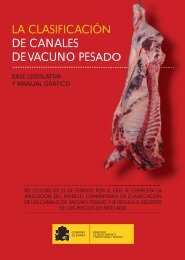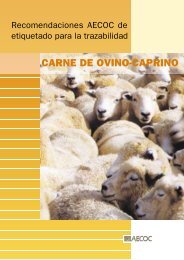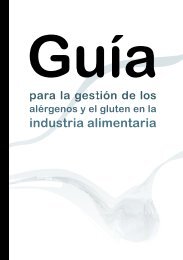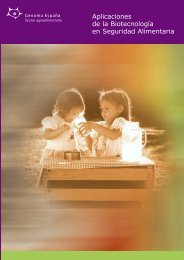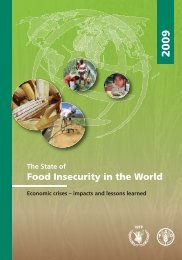Dietary Guidelines for Americans - SchoolNutritionAndFitness.com
Dietary Guidelines for Americans - SchoolNutritionAndFitness.com
Dietary Guidelines for Americans - SchoolNutritionAndFitness.com
- No tags were found...
You also want an ePaper? Increase the reach of your titles
YUMPU automatically turns print PDFs into web optimized ePapers that Google loves.
oth lipids and proteins (lipoproteins). Threemajor classes of lipoproteins are found in theserum of a fasting individual: low-density lipoprotein(LDL), high-density lipoprotein (HDL),and very-low-density lipoprotein (VLDL).Another lipoprotein class, intermediate-densitylipoprotein (IDL), resides between VLDL andLDL; in clinical practice, IDL is included in theLDL measurement. Elevated lipid levels in theblood is known as hyperlipidemia.cross-contamination—The spread of bacteria,viruses, or other harmful agents from one surfaceto another.cup equivalent—The amount of a food product thatis considered equal to 1 cup from the vegetable,fruit, or milk food group. A cup equivalent <strong>for</strong> somefoods may be less than a measured cup becausethe food has been concentrated (such as raisins ortomato paste), more than a cup <strong>for</strong> some foods thatare airy in their raw <strong>for</strong>m and do not <strong>com</strong>press wellinto a cup (such as salad greens), or measured in adifferent <strong>for</strong>m (such as cheese).diabetes—A disorder of metabolism—the way thebody uses digested food <strong>for</strong> growth and energy. Indiabetes, the pancreas either produces little or noinsulin (a hormone that helps glucose, the body’smain source of fuel, get into cells), or the cells do notrespond appropriately to the insulin that is produced.The three main types of diabetes are type 1, type 2,and gestational diabetes. About 90 to 95 percentof people with diabetes have type 2. This <strong>for</strong>m ofdiabetes is most often associated with older age,obesity, family history of diabetes, previous historyof gestational diabetes, physical inactivity, andcertain ethnicities. About 80 percent of people withtype 2 diabetes are overweight. Prediabetes, alsocalled impaired fasting glucose or impaired glucosetolerance, is a state in which blood glucose levelsare higher than normal but not high enough to becalled diabetes.dietary reference intakes (dris)—A set ofnutrient-based reference values that expand uponand replace the <strong>for</strong>mer Re<strong>com</strong>mended <strong>Dietary</strong>Allowances (RDAs) in the United States and theRe<strong>com</strong>mended Nutrient Intakes (RNIs) in Canada.They include:• acceptable Macronutrient distribution range(aMdr)—Range of intake <strong>for</strong> a particularenergy source that is associated with reducedrisk of chronic disease while providing intakesof essential nutrients. An intake outside of theAMDR carries the potential of increased risk ofchronic diseases and/or insufficient intakes ofessential nutrients.• adequate intake (ai)—A re<strong>com</strong>mendedaverage daily nutrient intake level based onobserved or experimentally determined approximationsor estimates of mean nutrient intakeby a group (or groups) of apparently healthypeople. This is used when the Re<strong>com</strong>mended<strong>Dietary</strong> Allowance cannot be determined.• estimated average requirement (ear)—Theaverage daily nutrient intake level estimated tomeet the requirement of half the healthy individualsin a particular life stage and gender group.• re<strong>com</strong>mended dietary allowance (rda)—Theaverage dietary intake level that is sufficient tomeet the nutrient requirement of nearly all (97to 98%) healthy individuals in a particular lifestage and gender group.• tolerable upper intake level (ul)—The highestaverage daily nutrient intake level likely topose no risk of adverse health effects <strong>for</strong> nearlyall individuals in a particular life stage andgender group. As intake increases above theUL, the potential risk of adverse health effectsincreases.eating pattern—The <strong>com</strong>bination of foods andbeverages that constitute an individual’s <strong>com</strong>pletedietary intake over time. This may be a descriptionof a customary way of eating or a description of a<strong>com</strong>bination of foods re<strong>com</strong>mended <strong>for</strong> consumption.Specific examples include USDA Food Patterns,<strong>Dietary</strong> Approaches to Stop Hypertension (DASH)Eating Plan, and Mediterranean, vegetarian, andvegan patterns.enrichment—The addition of specific nutrients(iron, thiamin, riboflavin, and niacin) to refined-grainproducts in order to replace losses of the nutrientsthat occur during processing.essential nutrient—A vitamin, mineral, fatty acid,or amino acid required <strong>for</strong> normal body functioningDIETARY GUIDELINES FOR AMERICANS, 2010 92


